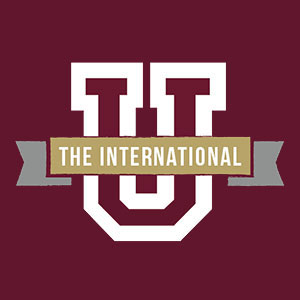New Learning Experience this Fall at TAMIU for Freshmen

Ivy covered walls … Hours spent in solace in a library … Seemingly endless searches for ways to “connect” to others … Missing an important assignment or exam … Missing a sense of community, sometimes missing home.
These are all common expectations that have come to be identified with the University experience. At Texas A&M International University (TAMIU), there's a new effort to replace those expectations with a new student “learning community.”
This Fall, TAMIU will launch its first “Learning Community,” for all incoming freshmen.
Just what is that?
“It's basically employing a number of approaches that intentionally link or cluster two or more University courses, often using an interdisciplinary theme or problem, and enrolling a common group of students that forge their own tight-knit community that learns together,” said Conchita Hickey, TAMIU's executive director of Programs for Academic Support and Enrichment.
The Learning Community idea first appeared in the mid-80s and its use has expanded considerably since, buoyed by research that underscores mutual benefits for students and faculty.
“Successful teaching has always been about building relationships that establish and celebrate learning connections. The learning community links students in seemingly unrelated disciplines and helps them to see the relevance of their courses to their degrees together. Because the community is their peers, it helps to establish social networks and diminish the feelings of isolation,” Hickey explained.
What are the benefits?
“Learning Communities help to increase student involvement and reduce likelihood of absences. Student performance is increased with higher grade point averages and elevated intellectual development, leading to improved student retention. There are also measurable benefits for faculty development, including the encouragement of collaborative teaching and learning initiatives and opportunities to learn about other disciplines,” she said.
It's about sharing
The long-time TAMIU educator said perhaps most important is the shift in focus from solitary student efforts to shared opportunities that encourage and foster support from other students in addition to broad-based faculty support.
“It’s all about establishing a new sense of community, of linkage to one another through learning. It provides a comfort zone where support can thrive from both fellow students and faculty. One notable example comes to mind with our information literacy component,” she said, “for a new freshman student, any Library is a daunting experience. Each TAMIU learning community has a connected library component that's finely linked to the disciplines and helps to remove often imagined barriers to successful use and research.”
So how does it work?
As freshmen students register, they will be assigned to a learning community based on their course load, declared or undeclared major and schedule availability. The faculty in these linked classes work collaboratively to create assignments, activities, or discussions relevant to the content areas they are teaching. As a result, students experience how seemingly unrelated content areas offer relevant connections and opportunities for shared learning.
Why now?
Hickey said the move to Learning Communities at TAMIU is the desired result after a three-year research and development plan involving faculty, consultants, administrators and students. It is part of the University's commitment to “Foundations of Excellence,” a voluntary year-long self-study and improvement process coordinated by the National Policy Center for the First Year Experience.
“There's no denying that this is a shift, but we know that the research strongly supports our initiative. We believe that the University is at a crossroads in its history as a regional University of choice and we are committed to continually bettering the learning experience, resulting in measurable gains for the quality of student the University brings the communities it proudly serves,” she concluded.
For additional information on the TAMIU Learning Communities, please contact Hickey at 326.2134, visit offices in Dr. Billy F. Cowart Hall, 206 or e-mail chickey@tamiu.edu
University summer office hours are from 8 a.m. - 6 p.m. Monday-Friday and from 8 a.m. -12 p.m. on Fridays.
Journalists who need additional information or help with media requests and interviews should contact the Office of Public Relations, Marketing and Information Services at prmis@tamiu.edu